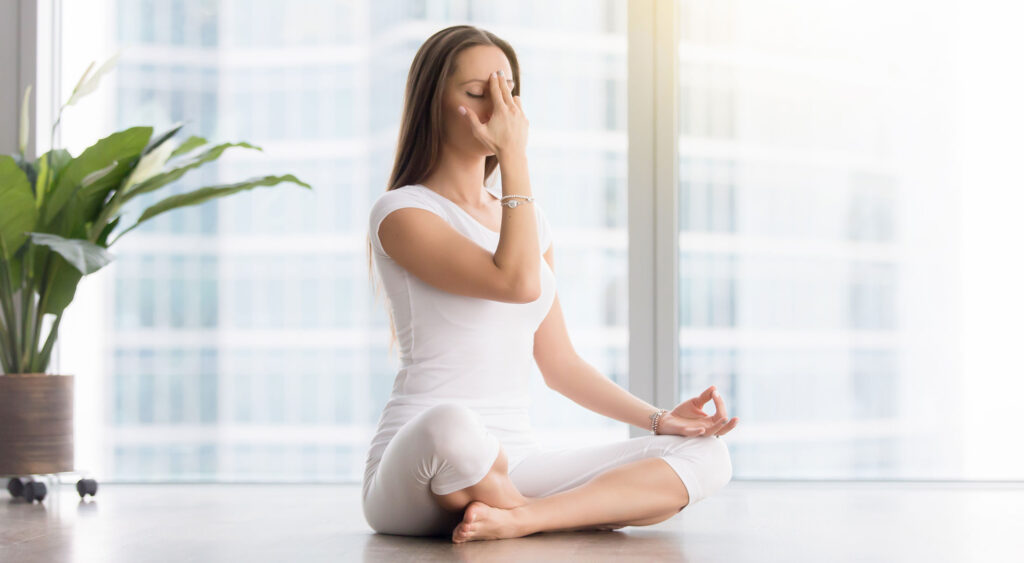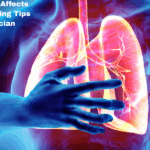
Chronic Obstructive Pulmonary Disease (COPD) and bronchitis are respiratory conditions that affect the airways, making breathing difficult. Breathing exercises and techniques can play a crucial role in managing symptoms, improving lung function, and enhancing the overall quality of life for individuals living with these conditions. In this blog, we will explore effective breathing exercises and techniques tailored to COPD and bronchitis patients.
- Diaphragmatic Breathing (Deep Breathing):
Diaphragmatic breathing, also known as deep breathing, is a technique that focuses on using the diaphragm to breathe deeply and fully. This exercise helps improve lung capacity, oxygen exchange, and relaxation. Follow these steps:
- Sit or lie down in a comfortable position.
- Place one hand on your chest and the other on your abdomen.
- Inhale slowly through your nose, allowing your abdomen to rise while keeping your chest relatively still.
- Exhale slowly through pursed lips, feeling your abdomen fall.
- Aim for 5-10 minutes of diaphragmatic breathing several times a day.
- Pursed Lip Breathing:
Pursed lip breathing helps regulate breathing, improve oxygen exchange, and reduce shortness of breath. Here’s how to do it:
- Inhale slowly through your nose for a count of two.
- Pucker your lips as if you were about to blow out a candle.
- Exhale gently and slowly through pursed lips for a count of four.
- Repeat this cycle for 5-10 minutes, as needed.
- Huff Coughing:
Huff coughing is a technique that helps clear mucus from the airways, reducing the risk of infection and improving breathing. Follow these steps:
- Sit up straight and take a deep breath in.
- Exhale forcefully and audibly in short bursts (like saying “huff”) to move mucus towards the mouth.
- Avoid forceful coughing, as it can strain the airways.
- Segmental Breathing:
Segmental breathing helps improve ventilation in specific parts of the lungs. It’s particularly useful for COPD patients with uneven lung function. Here’s how to do it:
- Place your hands on the sides of your chest and your fingertips on your upper abdomen.
- Inhale slowly and deeply through your nose, expanding your chest and upper abdomen.
- Exhale slowly and completely through your mouth.
- Focus on directing your breath to different areas of your lungs.
- Inspiratory Muscle Training:
Inspiratory muscle training involves using resistance devices to strengthen the muscles responsible for inhalation. Consult a healthcare professional before starting this exercise. They can recommend the appropriate device and training regimen.
- Yoga and Tai Chi:
Gentle yoga and Tai Chi incorporate breathing techniques with movement and relaxation. These practices can enhance lung function, flexibility, and overall well-being.
Conclusion:
In conclusion, incorporating breathing exercises and techniques into the daily routine of individuals living with COPD and bronchitis can have a profound impact on their respiratory health and overall well-being. These techniques, including diaphragmatic breathing, pursed lip breathing, huff coughing, segmental breathing, and inspiratory muscle training, offer a range of benefits such as improved lung capacity, better oxygen exchange, reduced shortness of breath, and enhanced mucus clearance.
It’s important to remember that while these exercises can be highly effective, they should be practiced under the guidance of a healthcare professional, taking into consideration the individual’s specific condition and needs. Seeking the expertise of medical practitioners like Dr. Yogesh Agrawal can provide personalized recommendations and supervision tailored to each patient’s unique circumstances.
Dr. Yogesh Agrawal, a renowned expert in respiratory medicine, has dedicated his career to helping patients with respiratory conditions like COPD and bronchitis. His insights and guidance can significantly contribute to the successful management of these conditions through a combination of medical treatment, breathing exercises, and lifestyle adjustments. By working closely with healthcare providers like Dr. Agrawal, individuals can achieve better control over their symptoms and improve their overall quality of life.
Remember, the journey towards better respiratory health is a collaborative effort between medical professionals, patients, and their support systems. With the right guidance and consistent practice of appropriate breathing techniques, individuals can take significant steps towards breathing easier and enjoying a more active and fulfilling life.




